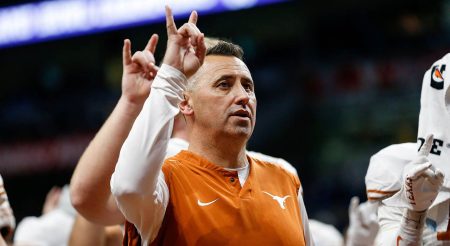The Shifting Landscape of College Basketball: Jim Larrañaga’s Retirement and the NIL Era
The recent retirement of Jim Larrañaga, the winningest coach in Miami Hurricanes men’s basketball history, underscores the dramatic transformations occurring within the collegiate sports landscape. Larrañaga’s departure, following a challenging 4-8 start to the 2023-24 season, which ultimately concluded with a 15-17 record, wasn’t simply a matter of wins and losses. His decision, announced in a December 26th press conference, highlighted the profound impact of the name, image, and likeness (NIL) era and the accompanying transfer portal dynamics on the coaching profession. These new realities, he admitted, left him "exhausted" and questioning his ability to fully commit to the demands of his role. After a distinguished 53-year coaching career, Larrañaga felt unable to "successfully navigate this whole new world," signifying the pressures and complexities introduced by NIL. This sentiment echoes a growing concern among coaches struggling to adapt to the rapidly evolving environment of college athletics. Tony Bennett’s resignation from Virginia just before the season began further emphasizes the challenges veteran coaches face in navigating these uncharted waters.
Larrañaga’s departure marks the end of a remarkably successful 14-year tenure at Miami. He guided the Hurricanes to six NCAA Tournament appearances, including four Sweet 16 runs, a historic Elite Eight appearance in 2022, and a culminating Final Four appearance in 2023, less than two years before his retirement. His legacy also includes securing the ACC tournament title in 2013, a significant achievement for the program. Beyond Miami, Larrañaga orchestrated a Cinderella run with George Mason in 2006, leading the mid-major program to an unexpected Final Four appearance, solidifying his reputation as a skilled and adaptable coach. This history makes his decision to retire even more poignant, revealing the scale of the changes impacting the college game.
The NIL era has fundamentally altered the dynamics of college sports recruitment and retention. Student-athletes are now empowered to monetize their name, image, and likeness, creating a new layer of complexity for coaches. This requires them to not only possess traditional coaching skills but also to navigate the intricacies of NIL deals, marketing, and branding. The competitive landscape has intensified, with programs vying for top talent by offering lucrative NIL opportunities. This can create disparities between programs with greater resources and those with less, potentially exacerbating existing inequalities. The transfer portal, which allows athletes to switch schools more freely, further complicates the equation. Coaches face the constant threat of losing key players to other programs offering better NIL packages or playing opportunities. This fluidity necessitates ongoing roster management and relationship building, adding to the already demanding workload of a head coach.
The confluence of NIL and the transfer portal has created an unprecedented level of instability within college athletics. Coaches are forced to constantly adapt to roster changes, manage player expectations regarding NIL opportunities, and navigate the increasingly complex financial aspects of the game. This demanding environment requires coaches to develop new skill sets and strategies, often departing from traditional coaching methods. The pressure to secure and retain top talent through lucrative NIL deals can also create ethical dilemmas, as coaches must balance the needs of their program with the individual interests of student-athletes. Furthermore, the constant influx and outflow of players can disrupt team chemistry and continuity, making it more challenging to build a cohesive and successful program.
Larrañaga’s candid acknowledgment of his exhaustion underscores the toll these changes are taking on coaches. The demands of recruiting, coaching, and managing NIL and transfer portal dynamics can be overwhelming, leading to burnout and a diminished capacity to fully invest in the program. The pressure to win remains constant, while the resources required to achieve success have become more complex and demanding. This new reality necessitates a reevaluation of the traditional coaching role and the support systems available to coaches. Athletic departments must adapt to provide coaches with the necessary resources and guidance to navigate the NIL landscape and the transfer portal effectively. This may involve hiring dedicated NIL and compliance staff, offering professional development opportunities focused on these areas, and providing mental health resources to address the increased pressure and stress associated with the evolving demands of the job.
The retirement of Jim Larrañaga serves as a stark reminder of the transformative forces reshaping college basketball. The NIL era and the transfer portal have ushered in a new era of complexity and uncertainty, challenging established norms and placing unprecedented demands on coaches. As the landscape continues to evolve, it is crucial for universities and athletic departments to provide coaches with the resources and support needed to navigate this new reality. The future of college basketball may depend on the ability of coaches and institutions to adapt and thrive in this rapidly changing environment. The long-term impact of NIL remains to be fully understood, but Larrañaga’s experience underscores the need for careful consideration of its effects on the coaching profession and the overall health of college athletics.










